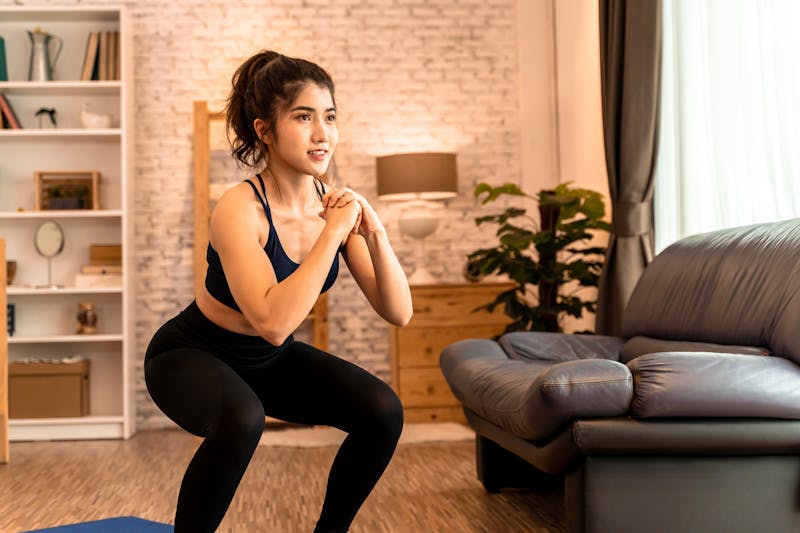
Pelvic floor exercises are an essential component of a healthy lifestyle, and much more so if you suffer from pain, incontinence, or sexual dysfunction. Pelvic floor muscles can often be weak and tight at the same time, requiring a multifaceted approach to care. In this blog, Dr. Sonia Bahlani explores a range of strengthening and stretching moves that support enhanced comfort, well-being, and peace of mind.
What Are the Benefits of Pelvic Floor Exercises?
Exercises that strengthen, stretch, and relax the pelvic floor muscles can present an excellent solution for a variety of pelvic concerns. When you undergo treatment with a pelvic doctor, they may suggest a broad range of interventions that encompass not only exercises but also lifestyle changes, biofeedback, and more.
Pelvic floor exercises can do the following:
- Enhances bladder and bowel control
- Minimize urinary and bowel incontinence
- Correct an overactive bladder
- Provide relief from pain and discomfort
- Combat symptoms of pelvic organ prolapse
- Improve sexual function, comfort, and response
- Offer heightened support for standing, walking, and running
Exercises That Optimize Pelvic Floor Strength
Stretching from the tailbone to the pubic bone, the “pelvic floor” consists of muscle and tissue functioning as support for the bladder, bowel, and sexual organs. Below are a series of exercises to strengthen this vital area of the body, which can increase bladder and bowel control and potentially enhance sexual function.
Kegels
Kegels are a well-known way to bolster pelvic floor strength, better control the bowels and bladder, and support the function of all pelvic organs. They are performed in the following manner:
Lie down comfortably on a yoga mat on your back with the knees bent and feet flat, inhaling slowly. When you exhale, contract your pelvic muscles and hold them for several seconds, feeling the muscles being pulled into the body. These specific muscles are the ones that can limit urine release and block the bowels from passing gas.
Slowly release the contraction as you inhale and relax the muscles. Strive for 10 repetitions 3 times a day.
Standing Kegels
Another option for boosting strength in the pelvic floor muscles is Standing Kegels, which use the force of gravity to effect powerful changes. These exercises can enhance bladder and bowel control and fortify the pelvic organs. Standing Kegels are performed as follows:
Stand tall with the feet hip distance apart. Add a small bend in the knees. Exhale as you lift and tighten the pelvic floor muscles. Release and relax as you inhale, being careful to keep the spine in a neutral position.
Bridge Pose
Bridge pose can help strengthen the core muscles and buttocks, giving improved support to the pelvis. It can also assist in improving the breath-body connection. Bridge pose is performed as follows:
Lie comfortably on a yoga mat, knees bent and feet flat. As you exhale, gently raise your hips, pressing your feet into the ground. You should strive to create a straight line with your torso and thighs. Squeeze the pelvic floor and buttocks as you hold the pose. Finally, release your hips back to the ground, letting go of all tension as you inhale.
Squats
While you might not immediately think of squats as a pelvic floor exercise, the reality is that they can be instrumental in improving stability in the pelvis, legs, and buttocks while also enhancing balance. Squats can be performed as follows:
Stand with your feet hip distance apart. As you exhale, thrust your hips back and bend your knees, imitating the action of sitting down in a chair. Hold your position, squeezing your thighs and hips. Then, rise again, straightening your knees as you inhale.
Seated Abdominal Bracing
Seated abdominal bracing is an excellent exercise for boosting strength and stability in the core. It is performed as follows:
Sitting upright in a chair with your feet flat, slowly inhale. As you exhale, tighten your stomach muscles. Inhaling again, release.
Alternating Pelvic Tilts
Alternating pelvic tilts are also invaluable for stabilizing and fortifying the pelvic floor muscles. They can be performed in the following manner:
Lying on your back with bent knees and feet on the floor, gently tilt the pelvis forward and arch the back. Then, press the back into the floor again, tucking the tailbone in.
Exercises That Optimize Pelvic Floor Relaxation
Because some pelvic concerns can be linked to overly tight muscles rather than weakness, here are a series of relaxation and stretching exercises to help eliminate tension. Symptoms of an overly tight pelvic floor include discomfort during intercourse, problems urinating, urinary frequency, and others.
Diaphragmatic Breathing
Also called belly breathing, this exercise helps to relax a tense pelvic floor and lengthen the muscles. It is performed in the following manner:
Lying on your back with knees bent and feet flat, put one hand on the chest and the other hand on the stomach. Inhale slowly, filling the belly with air. Feel your stomach rising with your hand. Hold your breath for a few seconds while you stay completely relaxed. Then, breathe out, seeing your hand on your belly lowering back down.
Happy Baby
Happy Baby pose provides a deep stretch and relaxation for the pelvic floor muscles and hips. It not only alleviates pain and discomfort but can also combat constipation. Happy Baby pose is performed as follows:
Lying flat on your mat, bend your knees, and place your feet flat on the ground. Bring your knees into your chest, grabbing your feet or ankles with your hands. Next, spread your legs, halting once you feel a significant stretch in your inner thighs. Take slow, deep breaths, relaxing the pelvic floor muscles as you hold the position.
Butterfly Stretch
A good butterfly stretch can expand the muscles in the inner thighs, alleviating tension. Tight thigh muscles can negatively impact the pelvic floor muscles. The stretch is performed in the following manner:
Lie on your back with your knees bent and your feet flat. Slowly bring the soles of the feet together, letting the knees fall outward. Breathe slowly and deeply as you hold the pose.
Seated Hip Flexor Stretch
When the hip flexors are overly tense, it can apply pressure to the pelvic floor, causing discomfort. A hip flexor stretch is a good solution and is performed in the following way:
Sit comfortably in a chair with your feet flat on the ground. Allow one leg to drop off the side of the chair while the other leg reaches back as far as possible. Keep the toes and knees faced forward. Hold the stretch as you breathe deeply.
When to Visit a Doctor
If any of these pelvic floor exercises and stretches cause pain, it may be time to see a professional. Pelvic discomfort could be a sign of a health issue, like an infection, hernia, or kidney stones. Treat your body with respect when it gives you warning signs, and don’t be afraid to ask for help.
Looking to Learn More About Pelvic Health? Reach Out to Pelvic Pain Doc Today!
Dr. Sonia Bahlani founded Pelvic Pain Doc to provide patients with outstanding care and relief in a state-of-the-art practice setting. As a boutique urology and gynecology center, Pelvic Pain Doc is a recognized source of expertise in the diagnosis and treatment of all types of pelvic discomfort. Dr. Bahlani is a fellowship-trained provider specializing in sexual dysfunction and pelvic issues who can provide a personalized treatment plan that restores your comfort, peace of mind, and well-being. Call today to get started with a private consultation.

